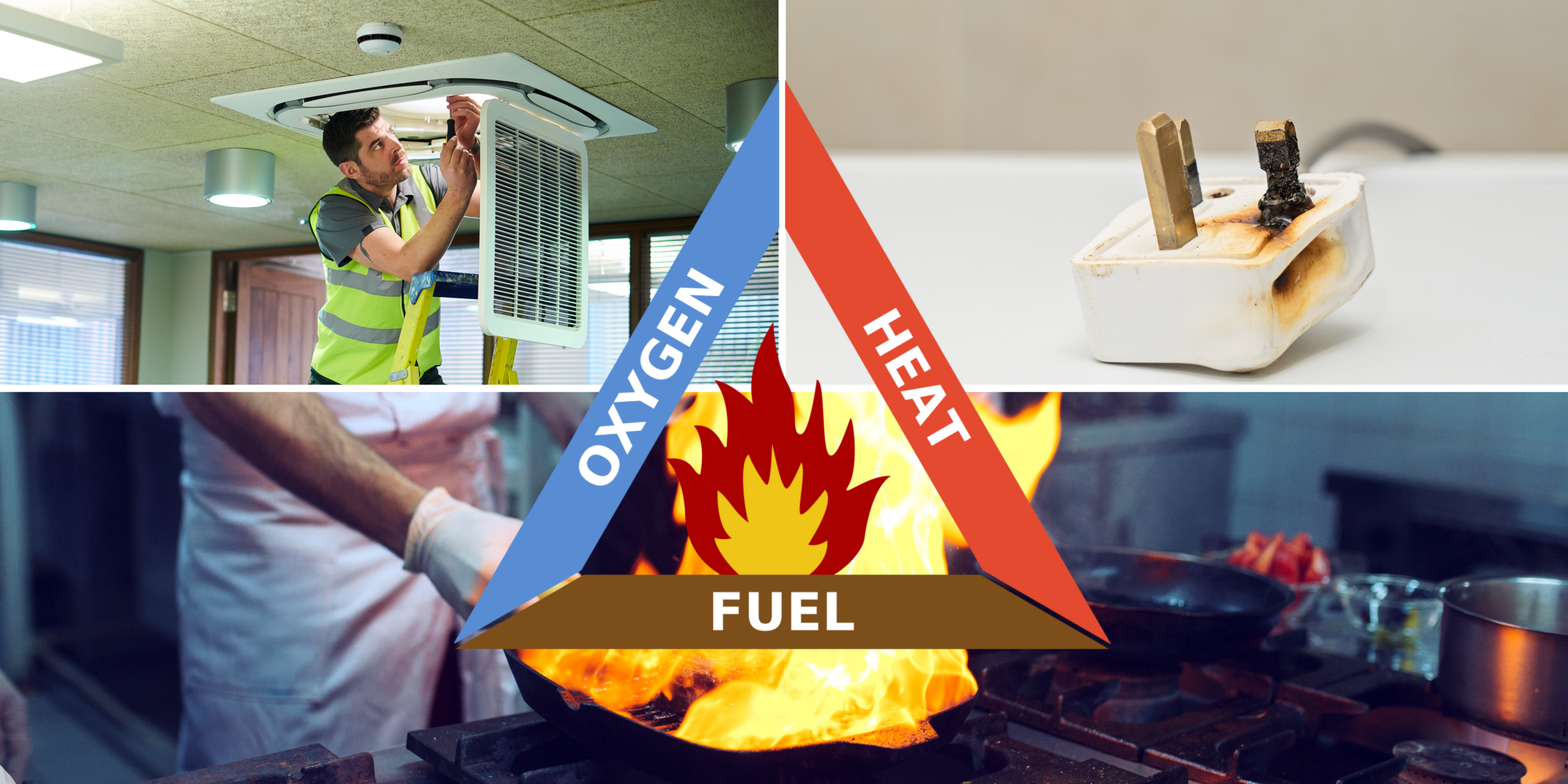A UK Fire Risk Assessment is a document that is used to evaluate the likelihood of a fire ending in a property. The aim of a risk assessment is to determine which risks pose the greatest risk for a property and which individuals live in that property. Fire Risk Assessments are a legal requirement for all business owners in the UK. The assessment should be carried out by someone with knowledge of fire safety and the competency to carry out such an assessment.
The manager must make sure the building is safe from fire and make sure that everyone can escape safely. They must also keep a fire risk assessment. It must be up to date, written down, an accurate account of what was found, and kept for a minimum of five years.
A UK fire risk assessment is a process that identifies potential fire hazards in a building or facility. Consequently, this assessment helps to determine the level of risk associated with each hazard and identify every source of ignition. All hazards will be noted and we will provide recommendations for mitigating those risks.
FRA Fire Safety Order 2005
The Fire Safety Order 2005 states that every building must have a UK fire risk assessment. A fire risk assessment identifies the risks and hazards in your premises, assesses them and puts measures in place to control them. If a fire risk assessment has not been done yet, you need to get one done as soon as possible.
As a result of stricter fire safety legislation, every business with more than five employees must have a fire risk assessment conducted on their property.
A UK fire risk assessment is a process that everyone should do in their workplace, and it’s one of the most important steps to ensure your business or organisation is protected against fire. This guide will explain what you need to know about fire risk assessments and how to carry them out.
Own or manage a commercial property? It is your responsibility to ensure that it is safe from fire hazards.
- For fire protection products, visit here
- For flame retardant workwear, visit here
- Download a fire risk assessment template
Need A Fire Safety Risk Assessment?
What is the Purpose of a UK Fire Risk Assessment?
As with any risk assessment, the purpose of a UK fire risk assessment is to identify the potential fire risks and take steps to control, mitigate, eliminate or reduce them. The aim of this process is to reduce the likelihood of a fire occurring in your property.
There are five main objectives for conducting a UK Fire Risk Assessment:
- To identify the potential fire risks within your premises;
- To identify how these risks can be managed through control measures;
- To identify actionable steps that may be taken to manage those risks effectively;
- To develop an appropriate course of action based on what you have discovered during the survey (i.e. do nothing about it? Isolate sources? Remove them?). This will depend on how severe these risks are and how much impact they could have if not controlled correctly;
- Finally, review and update the UK fire risk assessment regularly.
Ensuring that your business premises are well maintained and have good fire safety measures in place is a good way to reduce the risk of fire. You should also make sure that staff are fully aware of how to identify and deal with any potential fire hazards.

Sources of Ignition
What are the sources of ignition? Firstly, it’s crucial that we are able to identify ignition sources. Often difficult to spot, we are seeking objects or processes capable of producing heat that can ignite flammable substances.
According to the National Fire Protection Association, the most common sources of ignition are faulty electrical systems, naked flames, friction and hot surfaces, smoking materials and arson.
What Should You Look For When Conducting Your Fire Risk Assessment?
When conducting a UK fire risk assessment you should look for:
- Hot Surfaces: Heat is produced where energy exists. However, in this example let’s focus on deliberate heat as a source of ignition. In Winter it is fairly common for employees to want electrical heaters. Electrical heaters use a lot of energy and therefore are capable of overloading circuits. Because heaters are prone to tipping, this could cause an additional fire risk.
- Overloaded Electrical Sockets: Undoubtedly overloaded sockets can cause a fire risk due to overheating. Generally, this is true if the overloaded socket is in an enclosed space. We advise that if you have overloaded sockets, you should be sure to check them regularly and unplug any appliances that are not being used.
- Open Gas Flames: When you have an open gas flame, it provides a source of ignition for any flammable materials in the area. Fire burning is a source of ignition and gas can help it spread. Also, we advise never leaving a gas stove unattended while it’s on.
- Ovens, Fryers and Hotplates: Firstly, we never advise oil and grease to be left unattended. Secondly, the temperature of a hot plate can reach 750°C. This is significantly higher than the combustion temperature of cardboard, cloth or paper (255°C – 575°C).
- Faulty or Damaged Electrical Equipment: Injuries, burns and explosions are extremely common in electrical equipment. Known as arcing, an electrical discharge capable of reaching 19426°C is released. As a result, combustion is common if electrical equipment isn’t tested. Buy arc flash protection clothing here.
Who is Responsible for a UK Fire Risk Assessment?
In England and Wales. If you’re an employer you’re responsible for fire safety. This makes you known as the ‘responsible person’. The Regulatory Reform (Fire Safety) Order 2005 details what you have to do to comply with the law. (The rules are different in Scotland and Northern Ireland – please ring us for specific advice).
Your insurance provider will assume you are in compliance with the fire safety order when they give you a quote.
In need of fire safety training? Visit here.
To learn how to use a fire extinguisher, visit here.
You could get fined and/or go to prison if you don’t follow fire safety regulations. Minor penalties can be up to £5,000. Major penalties can have unlimited fines and up to 2 years in prison.
Local fire and rescue authorities have the ability to inspect any premises. They can issue fire safety notices telling you about changes you might need to make to your premises. If they consider that your fire prevention measures are totally inadequate they may even restrict access to your business until the issues are resolved.
Why Use OHEAP Fire & Security?
We at OHEAP Fire & Security are a fully accredited company to ISO 9001:2008 in quality management. Specialists in the fire industry, OHEAP have over 60 years of experience. We can complete your fire risk assessment at your premises.
Our website has an online fire risk assessment available. We have designed this for businesses with low to medium fire risk elements. The online fire risk assessment allows you to go through the fire risk assessment process in your own time and at your own pace.

How Can Fire Risks Be Reduced?
Fire risks can be reduced by a range of factors, including installing smoke alarms, ensuring that all electrical equipment is safe and in good working order and removing combustibles where possible. Fire risks are prevalent in businesses that are based in older buildings and premises, especially with poor fire safety measures. Also, many businesses have a large amount of equipment that generates heat, which can cause the temperature to rise in offices. Fire risks increase when there is flammable material such as furniture or paper in the vicinity, which can ignite if exposed to high temperatures.
In addition, if a fire breaks out in a building, the smoke created can quickly spread to other floors and parts of the premises. This can cause panic among staff and customers and lead to further serious injuries or even fatalities.
Conclusion
In conclusion, fire risk assessments are a great way to stay safe in your home and workplace. They can help you take precautionary measures before a fire breaks out so that if it does happen, your response time will be quick enough to minimise damage. A fire is one of the most dangerous things that could happen at home or work, so it’s important to have an emergency plan in place just in case.
The aim of a fire risk assessment is to identify the risks in your building and how you can reduce them. The assessment will also look at how well-prepared your staff are for an emergency situation. It should cover everything from fire exits to evacuation procedures and ensure that everyone knows where they need to be in case of an emergency.
It’s also important to make sure that your fire risk assessment is up-to-date. This will help you stay on top of any changes in your building or workplace that could put you at risk. If you’re not sure how to do this, talk with OHEAP Fire & Security and we can assess the situation and offer advice on how best to proceed.